What Is A Bobbin? 2024 Complete Guide
If you want to learn how to sew, you need to know about what is a bobbin they’re an essential part of the process.
In sewing, a bobbin is a small spool that holds thread and sits at the bottom of the machine below the needle plate and above the fabric. With this guide, all your questions about bobbins will be answered.
The Bobbin winder winds new thread onto the bobbin. When you sew, the machine pulls the thread from the bobbin to create stitches.
Most modern machines have automatic winding systems, but some still require manual winding. So, now you know what a bobbin is let’s learn how to use one!
What is a Bobbin?
The bobbin is a smallholder located in the lower part of the sewing machine that contains thread. This spool of thread falls under the needle and makes each stitch by catching the bottom thread from the bobbin with a top string coming through said needle.
You can never have too many bobbins! If you want to be able to sew with multiple colors, make sure you have a bobbin ready for each color thread.
To maintain even tension and create neater stitches, it’s best to use the same quality of thread for both the bobbin and top spool.
Although it’s not required, they should also be the same color. Furthermore, having plenty of bobbins on hand makes the sewing less troublesome.
SEE Also: Best Multi Needle Embroidery Machine
What is a Bobbin For Sewing?
Keep these things in mind about sewing machine bobbins:
What is a Bobbin Facts
TYPES: The type of bobbin you’ll need for your sewing machine depends on the brand and model of your machine. Your machine will usually come with one or two bobbins that are the correct size, but there are many different types and sizes of bobbins available. Some machines require a specific type of bobbin, so be sure to check your sewing machine’s instruction manual for more details.
DON’T OVERFILL: When plastic bobbins are filled too much, they bulge and no longer fit properly into the bobbin case. This Bobbin distortion will cause sewing machine malfunctions.
DIRECTION: Before beginning, ensure that the bobbin is threaded correctly for your machine type. Confirm that the threading mechanism is securely in place to avoid any issues with tension or disengagement.
LOOSE THREADS: To avoid issues, make sure the thread doesn’t stick up out of the bobbin. If it does, it may catch on the machine as the bobbin goes around.
SAVE TIME: If you want to save time, buy multiple bobbins of the same color thread. That way, you won’t have to keep re-threading and winding them.
What Is s Bobbin For Knitting?
Not only do sewing machines use bobbins, but weaving and knitting also require them. A bobbin is simply a spool or cylinder that holds yarn, wire, or string.
What is a Bobbin on a Sewing Machine?
A bobbin is a spool that is wound with thread, yarn, or other materials. It provides a secondary source of thread for sewing machines but can also be used in knitting machines and other industrial equipment.
These days, sewing machine bobbins look like small, flattened cylinders. They most commonly have a diameter of less than one inch. Bobbins can come in plastic, metal, or wooden form though most sewing machines use metal bobbins.
Have you ever wondered why a bobbin is called a bobbin? The word actually comes from the French bobine, which translates to mean “small sewing instrument.”
Contrary to popular belief, this doesn’t imply that a bobbin bobs up and down while the machine is in use!
Allan Wilson was the first person to invent and patent the sewing machine bobbin in 1850.
His design for a ” reciprocating shuttle machine” had a pointy shuttle that is similar to the bobbins used in sewing machines today. This shuttle provided the necessary second thread source for his machine.
Once this occurs, it becomes harder to follow the history of the bobbin with precision. Therefore, many sewing machine inventors and companies start a time period known as the “Sewing Machine Wars.”
They attempt to vainly file patents at each other in order to have exclusive rights over new inventions.
Some of these inventors include renowned names like Elias Howe and Isaac Singer. The Singer company eventually took credit for the Class 15 style bobbin, which garnered immense popularity and remained the most popular model for several decades.
The round bobbin is an interesting invention, and the credit for this goes to Yosaku Ose. In 1921, Ose changed the Bobbin from the longer shuttle style to today’s round shape that we use currently.
The term “Janome” means snake-eye, in reference to their well-known round bobbins!
Did you know that the invention of the sewing machine bobbin was what led to the creation of modern sewing machines? This is because a bobbin provides a sewing machine with its two-thread system.
Related Article: How to Fix Bobbin Case
What Is a Bobbin Used For?
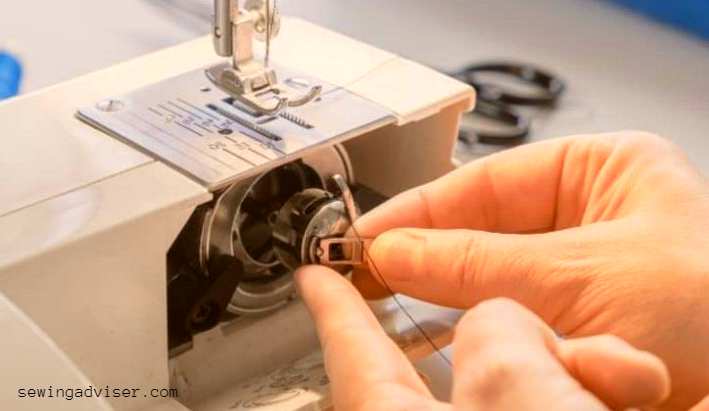
The bobbin in a sewing machine is responsible for providing the second thread that helps the machine create a lockstitch.
The bobbin holds the lower thread while the spool pin on sewing machines usually holds the upper threads. Inventing the lockstitch model started what we now know as modern-day sewing machines.
A lockstitch uses two threads to secure the thread in place on both the top and bottom of a layer of fabric, creating stitches.
A lockstitch is a type of stitch that is made with a sewing machine. To understand how it works, you can compare it to the way a hand-sewn stitch is made.
In the days before sewing machines were invented, people would sew by hand using a needle and thread. Every stitch required the tailor to push the needle through all the layers of fabric.
The thread snagged on the eye of the needle would effortlessly pass through the fabric. The tailor would now grip the needle and extra length of thread on the newly created side of the layers.
They would take the needle with thread over a short distance, put the needle back into the fabric from behind, and pull it through again.
This process would leave some thread on the back of the material which created a stitch.
If the sewing machine needle and thread went all the way through the fabric, it would come up from the reverse side of the fabric.
But, because the machine holds the needle in a stationary position, this cannot happen.
To solve this issue, the machine sews a lockstitch. In a lockstitch, the needle pushes a loop of upper thread through the fabric while the lower thread is carried in a spinning case around the bobbin.
The shuttle hook on the bobbin casing catches the upper thread and loops the lower thread around it, which then grabs the needle thread and holds it to the underside of the fabric. In other words, this is what creates stitches!
The bobbin is an essential component of a sewing machine, but if you’re new to sewing, it can be tricky to locate.
Some machines keep the bobbin inside the body of the machine, while others have a dedicated compartment for it.
In either case, it’s important to know where your particular model keeps its Bobbin so you can effectively use your machine.
Most sewing machines have a front-loading bobbin. With this type of machine, you’ll find the bobbin behind a small door located at the base of the machine, right underneath the needle. The bobbin will fit into the casing standing up on one side of the wheel.
Another frequent placement for bobbins is called a top-loading bobbin. With this machine, there will be a small slide that covers the needle plate right in front of the bobbin. For this type of machine, you will want to slot your bobbin flat-side down.
Different Types of Sewing Machine Bobbins
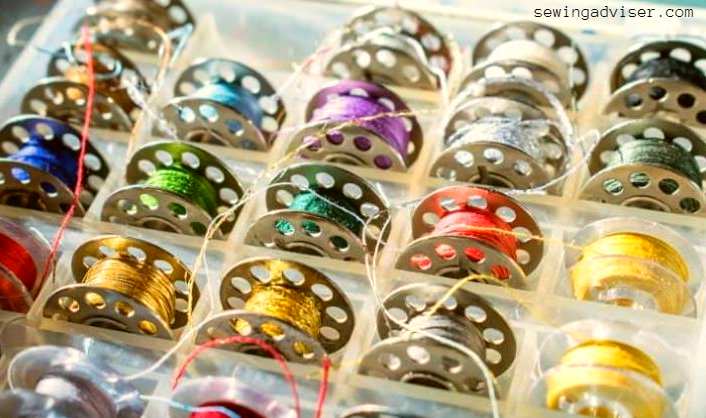
Some of the most popular types of bobbins are Class 15, M-style, and L-style.
The most frequently seen type of bobbin today is the L-style which has a .8” diameter (about the width of a nickel) but only offers .35” of width to hold the thread.
The Class 15, a sewing machine bobbin first invented by Singer in the early 1900s, is still popular today. This bobbin has a .835” diameter, simply barely larger than an L-style. However, it can hold more thread because of its wider width at .465”.
M-style bobbin dimensions are .98” in diameter and .42” in width. These types of bobbins are mainly used in longarm quilting machines or industrial sewing machines.
Quilting machines, in particular, use larger bobbins to accommodate the high stitch rate. These machines can sew so fast that they need a bigger secondary thread source to keep up with demand.
Some sewing machines come with specialty bobbins that are designed specifically for that machine. This is a common feature of antique machines.
Few people know this, but there are several lesser-known bobbin types, such as the G-style, J-style, U-style, Z-style, and Class 66 bobbins.
Bobbins come in two different materials: metal and plastic.
Not all the bobbins work in all sewing machines! You should use the type of bobbin that comes with your machine to avoid any issues.
one big difference between bobbin machines is that many beginner’s and intermediary-level sewing machines use an oscillating shuttle hook.
With this model, the shuttle hook only needs to go halfway around the bobbin case’s circle to catch the upper thread; thereafter, it falls back into its original position. To put it simply, it creates a half-circle as it moves along.
Though this model has been successful for over a century, it can cause more vibrations and may not run as smoothly as the second type of shuttle mechanism.
The rotary model is the most commonly used type of sewing machine by professionals and in industry.
With this model, the shuttle hook moves around the bobbin case in a full circle. Its movement is swift and continuous, making it quieter than an oscillating shuttle hook.
Why Do Sewing Machines Have Bobbins?
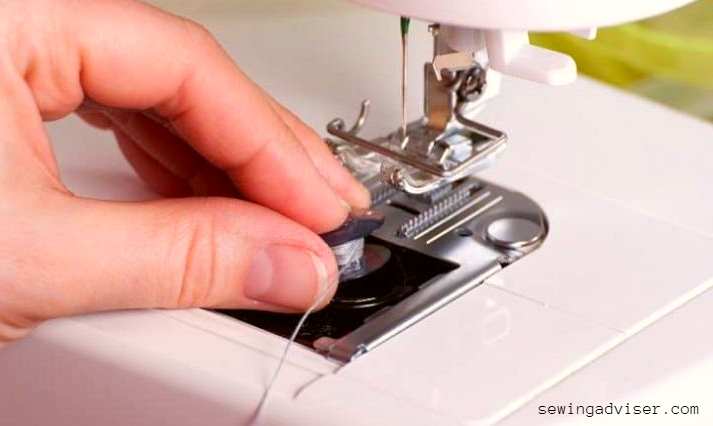
Most sewing machines use small, cylindrical bobbins that slot under the needle because they require two thread sources to create a lockstitch. Some machines however use larger bobbins.
By doing this, the machine can quickly pull up the lower thread and then down for the upper one all while creating a smooth stitch!
You may be asking yourself why sewing machines use a tiny bobbin instead of two spools of thread. After all, you have to periodically pause your work to refill the bobbin!
The key is the small shuttle hook on the outside of the bobbin casing. This hook catches the upper thread and lets the upper and lower thread lock together.
A smaller bobbin allows for a smoother sewing process because the hook has to quickly circle the shape of the bobbin case for each stitch.
Do All Sewing Machines Have Bobbins?
The only type of sewing machine that does not have a bobbin is sergers or overlock machines. All other types—including quilting machines and embroidery machines— come with bobbins.
Sergers don’t use a lockstitch. Instead, they create an overlock stitch by looping three or more threads in a complex braid around the cut edge of the fabric as it sews.
Every sewing machine designed for home use comes with a bobbin. That being said, the size and type of bobbin can differ between models.
Always double-check that you are using the correct type before starting your next project!
Are Sewing Machine Bobbins Universal?
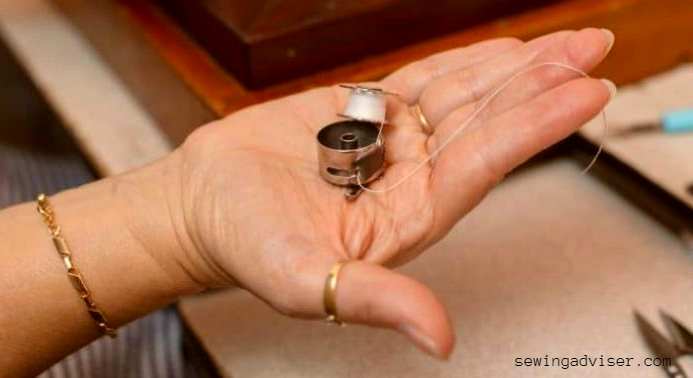
Although sewing machine bobbins may appear to be universal, they are not because there is no one-size-fits-all bobbin that you can plug into all sewing machines.
With that said, you can find three standardized classes of bobbin types, and most sewing machines use one of these three types.
Earlier in the article, we outlined the three primary types of bobbins: L-style, M-style, and Class 15.
If you consult your sewing machine manual, it will tell you which type of bobbin to use. The sizing chart below makes it clear why an M-style bobbin cannot be used in a case meant for an L-style bobbin!
Bobbin vs Spool: What is the Difference?
The main difference between a spool and a bobbin in a sewing machine is that the bobbin goes beneath the needle, while the spool goes over the needle.
The spool thread follows winding through tension discs to form an upper thread path, going over the take-up lever, and finally down to the eye of the needle. The bobbin slots into its case beside where it’s threaded.
In sewing machine terminology, a bobbin is typically referred to as the spool of thread that goes on the spool pin.
What is a Bobbin Winder?
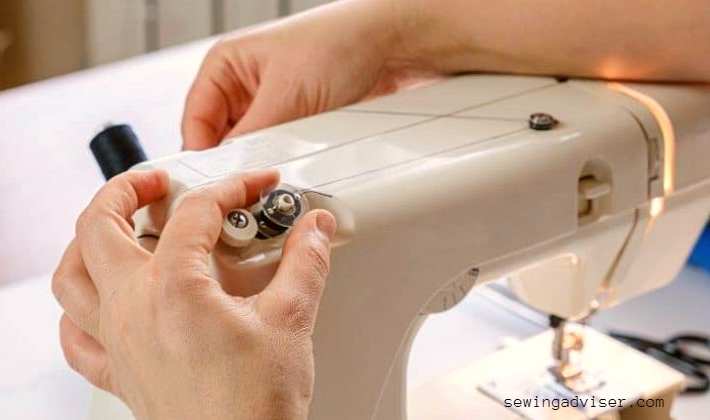
A bobbin winder lets you fill an empty bobbin with thread, which most sewing machines have because it’s convenient to use the same color of thread on both the bobbin and spool. This way, your stitches will be less visible against the fabric.
Most sewing projects start by winding a bobbin that is empty with thread from the spool.
Depending on the sewing machine you have, the bobbin winding process could look different.
If you’re ever unsure, there’s always a guide in the owner’s manual that comes with your machine. Although all manuals are different, the general steps usually stay pretty similar.
To start, slide the spool of thread onto the spool pin. If your sewing machine uses a vertical spool pin, place a felt circle on the end of it before adding the spool. Afterward, put the spool cap over everything.
To start, push the bobbin winder pin (usually located on top of the machine) with an empty bobbin.
Carefully pull on the thread until twelve inches are free.
To use most bobbin winders, follow the guide threads on top of the machine casing.
First, wrap the thread once around a stationary screw near the spool of the thread.
Next, stretch the thread across to reach where you’ll be placing your empty bobbin.
To get started, take the thread and wrap it around the bobbin two times. After that, grab hold of the tail end of the thread and you’re all set!
Gently push the bobbin and the pin to the side until it reaches the small stopper on its right.
Before you start sewing, you need to wind the bobbin. It’s easy! Just turn on your machine and push down the foot pedal. The machine will do the rest let go of the thread when you feel it tugging lightly.
What is a Bobbin: Troubleshooting
If you think your sewing machine isn’t working because of a bobbin issue, check these easy things first.
If you’re having issues with your bobbin settings and tension, here’s what you can do:
RETHREAD: Before you assume that the issue lies with your bobbin, be sure to check and rethread it. There might be another problem altogether.
CLEAN: The bobbin must fit into the bobbin case snugly with no extra threads or fluff. If the bobbin is threaded properly, the thread should be pulled up smoothly to meet the needle thread on the upper side of the machine.
NEEDLES: As you begin your sewing project, take a moment to check that the needle in your machine is appropriate for the fabric you are working with. A needle that is too thin will break quickly and throw off your tension.
If bent, change it with a new one. Additionally, if you have been using the same needle for a while, it may now be dull. Not only will this bluntness affect tension on your machine but also lead to the fraying of both thread and fabric over time.
To avoid these problems down the road, regularly check that needles are inserted correctly and screwed in tightly so they don’t come loose as you sew.
BOBBIN TYPE: If you’re using the wrong bobbin, it can easily affect your sewing. Make sure you’re using the right bobbin for each machine to avoid any problems.
Bobbin Thread Problems
If the bobbin thread isn’t appearing close to the needle thread:
Make sure the bobbin winding spindle has returned to its neutral position on the machine.
To do this, ensure it is no longer engaged in a position for thread winding. Additionally, check that you are turning the flywheel in the right direction so that the needle can catch onto the bobbin thread and bring it to surface level.
Timing is crucial when it comes to sewing, and if your needle and bobbin are not connecting, it could be because the presser foot isn’t up. To avoid any further issues, take your machine to a sewing shop or service depot.
What is a Bobbin Looping
If you see the bobbin thread looping on the back of your sewing:
The looping of the bobbin thread on the back of the sewing is actually a problem with the needle tension.
Whatever happens on the underside of the fabric is connected to the upper or needle tension.
When the upper tension is too low, then it is not able to pull the bobbin thread up to form a neat stitch.
Use a piece of the same fabric you plan to sew to test your tension with a higher setting for your needle. Most machines have an optimal upper tension between 3 – 5.
What is a Bobbin Snapping
If the threads bunch up and snap:
If you want to avoid your sewing machine thread getting jammed or snapping, then use high-quality thread that is free of knots and irregularities.
Even though quality thread may cost a little bit more, it’s definitely worth the investment for a smooth sewing experience free of problems.
Incorrectly Loaded Bobbin
If you have improperly loaded your bobbin:
Whenever you are working with a machine, no matter how big or small, it is essential that the mechanics are in proper order.
For example, some sewing machines have front-loading bobbins while others have side-loading bobbins in a bobbin case.
Also, some bobbins simply drop into place while others need to be fitted snugly. To avoid any issues, always take time to read the instruction booklet that came with your purchase.
What is a Bobbin Tension
If your bobbin tension is not functioning properly, (not all models have this option)
If your bobbin is in a case that clicks into the machine after you’ve loaded it, you can check the tension by holding on to the thread attached to the bobbin.
The proper tension will allow the bobbin and thread to hang loosely. If the thread snaps, then it’s too tight; if dangling Bobbin reaches the ground, then it’s too loose.
The bobbin on your machine will have a small screw to adjust the tension. This only needs to be done incrementally and carefully, as too much movement at once can cause problems.
It’s helpful to think of it like an analog clock without numbers while you’re doing this turn the screw five minutes at a time.
To loosen the tension, turn the screw clockwise; to tighten it, go anticlockwise. You should have received a tiny screwdriver along with your other tools when you bought the machine.
Always ensure that your thread is facing the same direction as your bobbin case turns when you’re threading the bobbin.
Stuck Bobbin Case
If the bobbin case or bobbin is stuck and won’t turn:
Before you overreact and go to a repair shop, take off the bottom plate of your machine. See if there’s any lint or threads wrapped around objects under the plate.
If so, use a little stiff brush to sweep it out from the bobbin casing and check for any other foreign objects while you’re at it (e.g., broken pin or needle).
Your box of gadgets should have a pair of long pointed tweezers to help remove these types of obstructions; this will fix most common problems.
Bobbin Case is Loose
If the bobbin case is not tight:
If your bobbin case is loose, triple-check that you inserted it correctly and that you’re Bobbin’ along smoothly.
To fix this issue, first, turn the flywheel or handwheel towards you until the needle is at its highest point.
Then, check if the bobbin is in place and not moving around. Make sure that the needle isn’t hitting the bobbin case by slowly turning the wheel and watching as the needle goes down into the bobbin area.
However, if none of these solutions work, take your machine to a repair shop for further inspection.
Strange Bobbin Noise
If you’re hearing strange noises coming from your sewing machine and you’ve tried the recommended solutions above, take it to a professional.
Fiddling with it could actually make the problem worse, and if there is a technical issue, your machine might still be under warranty.
How to Thread a Bobbin in a Machine
If you are going to use a bobbin thread, it is crucial that you know how to wind the bobbin correctly, as well as how to insert and fix it if gets tangled. The tangles usually resemble something similar to a bird’s nest.
Depending on the brand of your sewing machine, the process to wind and insert a bobbin will vary. To figure out how to do so for your specific machine, consult your instruction booklet.
If the bobbin is not wound or inserted correctly, it will affect the machine’s stitching and tension. When you purchase your sewing machine, part of the demonstration should include how to master this skill.
How To Wind a Bobbin
Here is a summary of how to wind a bobbin:
Start by taking out the old bobbin from its holder with the needle in the uppermost position. Check that the bobbin is completely empty.
To begin, disengage the clutch on the side of the machine.
Place an empty bobbin on top of the pin on the bobbin winder.
Thread the spool pin, guide the thread around the machine, and then drop it in the small hole of the bobbin.
Disengage the clutch by clicking the bobbin winder to the right and start depressing the foot pedal. This will stop the needle from moving up and down as you’re winding the bobbin. On some brands of machines, there may be a button that does this instead.
Continue winding the thread until the bobbin is full.
To re-engage the clutch, click the bobbin winder to the right.
How to Insert a Bobbin
To insert the bobbin, please follow these steps:
To get started, you’ll need to load the wound bobbin into its casing. Your machine might be top-loaded or have a casing in the front.
Make sure the bobbin thread is tight by running it through the tension groove.
Spin the flywheel on the side so that the needle catches onto the top thread with your bobbin.
Pull the lower thread through.
Can You Sew Without a Bobbin?
Yes, You cannot sew without a bobbin on a regular sewing machine. With the exception of sergers, every machine that uses a lockstitch needs a lower thread provided by the bobbin this includes quilting and embroidery machines.
Did you know that the only way to sew without using a bobbin is by hand?
The fascinating thing about sewing machines is that such a tiny component, the bobbin measuring less than an inch in diameter, has such a big impact on its operation.
Where to Buy Bobbins
You can purchase bobbins from a variety of places, including Walmart, Joann Fabric, and Amazon.
If you own a unique sewing machine (e.g., an antique or specialized quilting machine), you may need to purchase your bobbin from an online sewing parts store instead to ensure compatibility.
Before you buy a new bobbin for your sewing machine, be sure to check the manual to see what size is recommended.
If you don’t have the manual, you can find the model number on your machine and do an internet search.
However, it’s very important that you only use a bobbin that is compatible with your machine using anything else could damage it beyond repair!
While you’re browsing the sewing notions aisle, you might notice some boxed pre-loaded bobbins next to the empty ones on the shelves.
You’re usually better off avoiding these. For one thing, you now know that bobbins don’t have universal sizing meaning that those pre-loaded versions may not be compatible with your machine.
Furthermore, if you’re using two colors of thread and they appear to match when you buy them, one may be a heavier weight than the other or be made of a different material, which can completely throw off your project!
Moreover, pre-wound bobbins could use a different tension than your bobbin-winding mechanism, which might disturb the rhythm of your machine since it would have to pull harder to get the thread off of the too-tightly-wound bobbin.
When you wind your own bobbins, the upper and lower thread will always match as you sew, making for a neater finished product.
Conclusion: What Is a Bobbin
The bobbin is a small, wheel-shaped cylinder that provides an extra source of thread for your sewing machine; it holds the lower thread while the spool on the spool pin holds the upper thread. As you sew, your machine draws from both sources of thread to create a lock stitch that binds the threads to either side of fabric pieces to form stitches.
The two most well-known bobbin shapes are the L-style and Class 15, though there are many other options available. Importantly, you should only use Sewing Machine bobbins that correspond with your machine type to avoid damage.
Do you know which type of bobbin is compatible with your sewing machine? Have you ever had to purchase new ones? Please leave your thoughts in the comment section below!
FAQs: What Is a Bobbin
What Holds a Bobbin in Place?
The bobbin case holds the bobbin in place and tension on the thread. It is a vital part of your sewing machine and may either be fixed or removable.
Are Metal Bobbins Better than Plastic?
Although both metal and plastic bobbins have their own benefits, you cannot choose which type to insert into your machine as it is solely dependent on the model. For instance, cheaper models usually take plastic bobbins that can be more easily distorted.
Do all Bobbins Fit in All Sewing Machines?
Absolutely not! Your machine is very specific about the type and size of bobbin it needs, and substitutions will not work. Always consult your machine manual or check with the manufacturer to make sure you’re using the right kind of bobbin. They’re relatively inexpensive, so buy a few when you find ones that work with your machine.
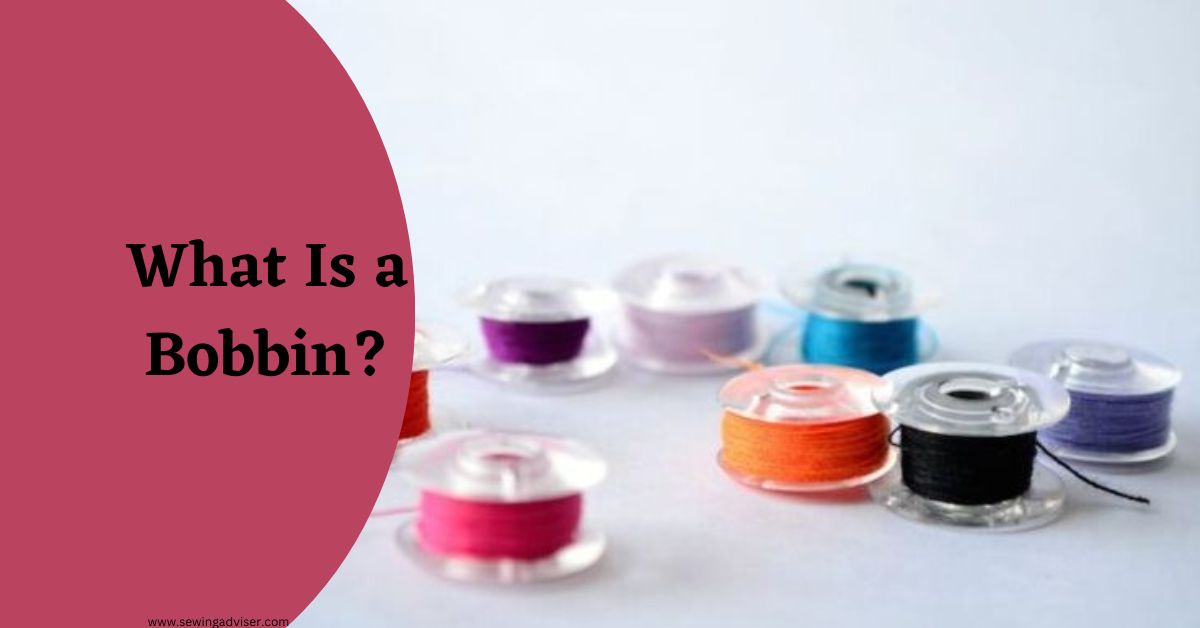
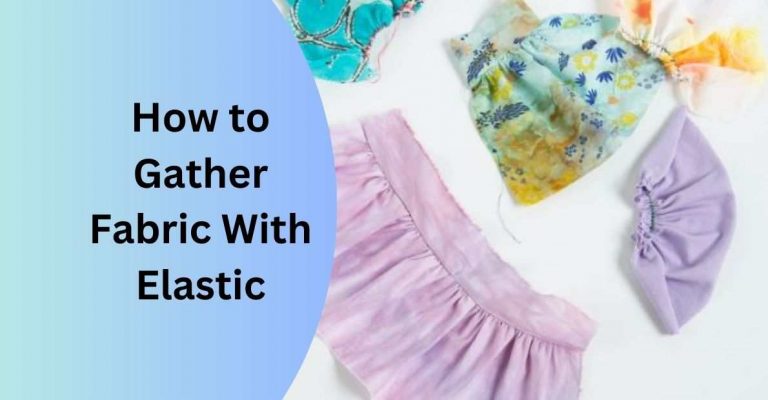
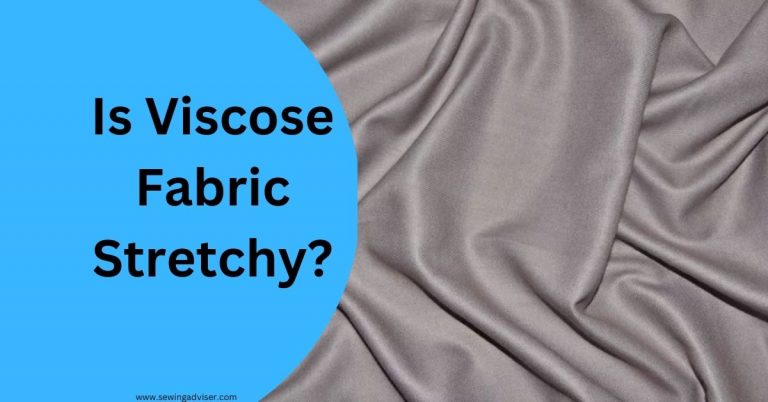
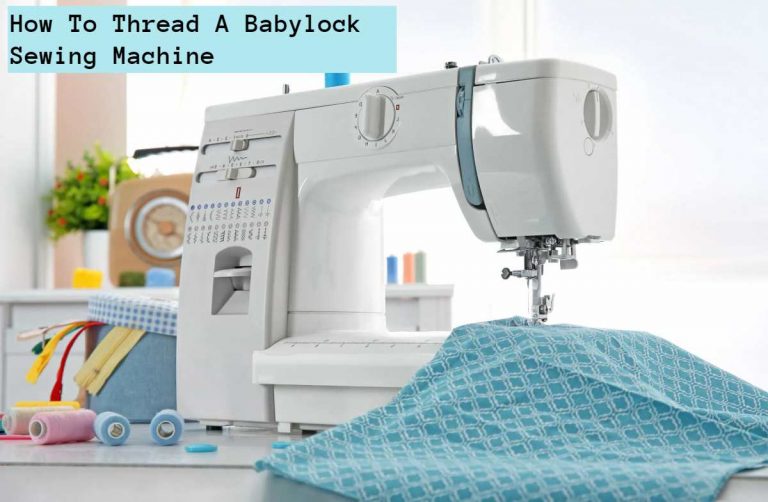
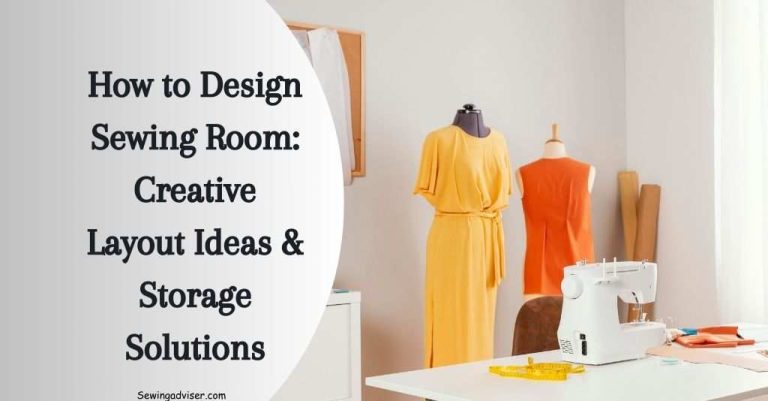
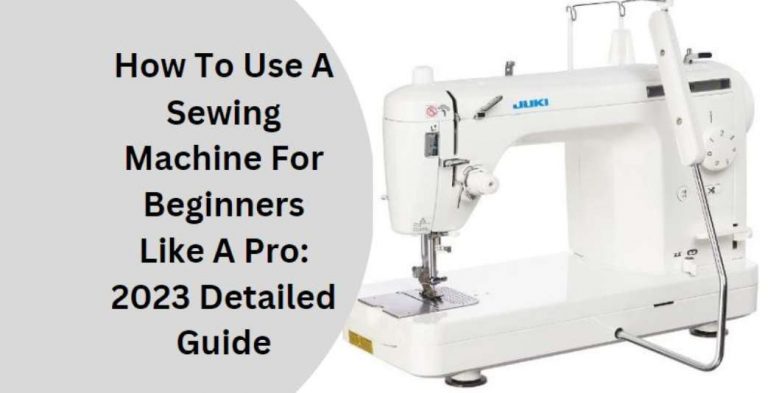
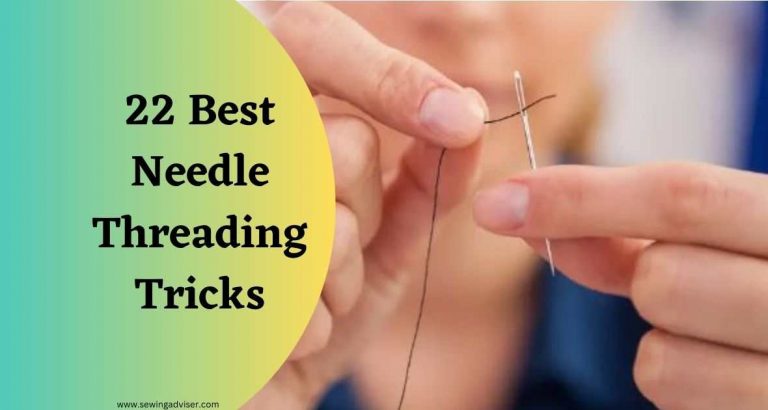
18 Comments